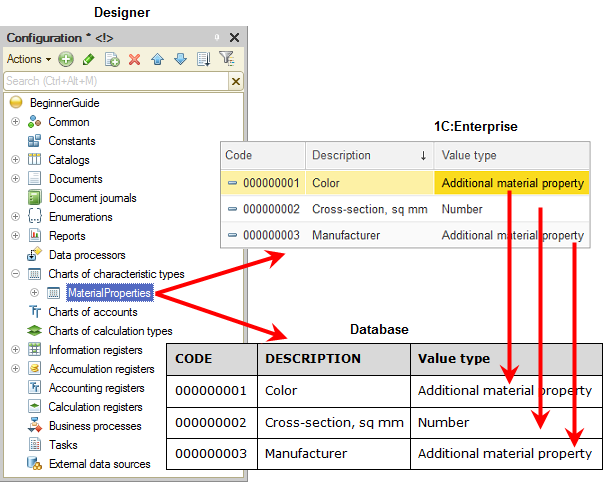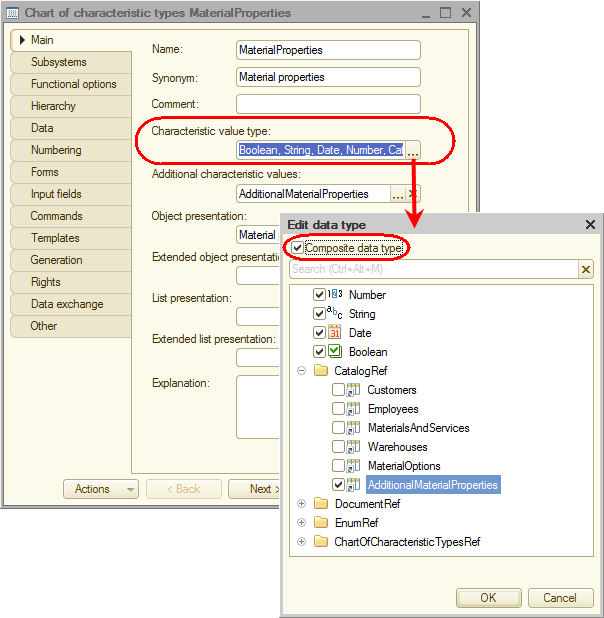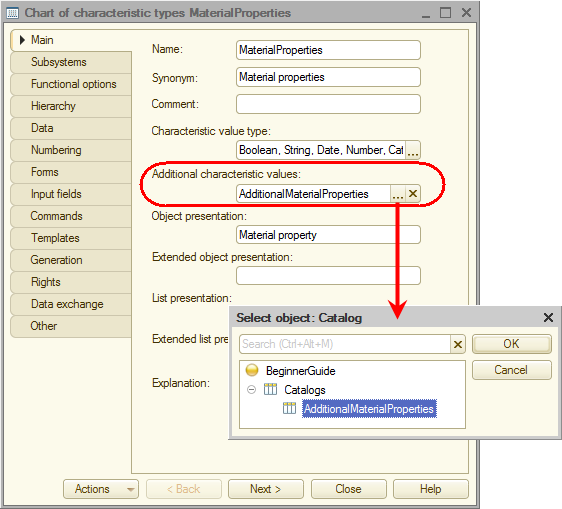The Chart of characteristic types configuration object is intended to describe data storage structures for user-defined characteristics. Based on a Chart of characteristic types, the platform creates a set of database tables for storing available characteristic types and their value types.
In its nature a chart of characteristic types is very similar to a catalog but it has a more specific goal: it only contains data that describes characteristic types of some database object.
A chart of characteristic types consists of characteristic types. Each characteristic type is defined by its name and value type.
A developer and, most importantly, a user can enter as many characteristic types as they need (fig. 15.1).

Fig. 15.1. A chart of characteristic types in Designer mode, in 1C:Enterprise mode, and in the database
The Chart of characteristic types configuration object has the Characteristic value type property. Developers use this property to define the composite data type that includes all the value types that can be assigned to characteristics (fig. 15.2).

Fig. 15.2. Characteristic value type property
In addition to that, the data types available in the configuration might not be sufficient for a user. For example, they want to include product color in their accounting data but the Color catalog is not available in the configuration.
To handle this scenario, a developer can create an auxiliary catalog and select this catalog in the Additional characteristic values property of the chart of characteristic types (fig. 15.3).

Fig. 15.3. Additional characteristic values property
Then a user can create a new characteristic type named Color and define available values for the color in the catalog of additional characteristic values.
Note that this catalog is subordinate to the chart of characteristic types. So if in the future a user wants to create a characteristic type named Scent and define values for this characteristic, they will create it in the same catalog of additional characteristics and the scent values will not be mixed with the color values.
Learn more! For details on the structure of 1C:Enterprise script objects intended for chart of characteristic types operations, see section Quick developer reference. Charts of characteristic types.
A chart of characteristic types has no internal predefined methods of linking a characteristic type to the object that it describes. It merely enables developers and users to define a certain set of characteristics and specify their types.
Depending on the applied solution at hand, developers decide for themselves how to maintain the correspondence between a specific characteristic type or characteristic value and a specific database object.
The example provided in this lesson is not simple in terms of its implementation. So we will first explain the logical relation between the objects that are used in the example.
Next page: Logical relation between the objects

